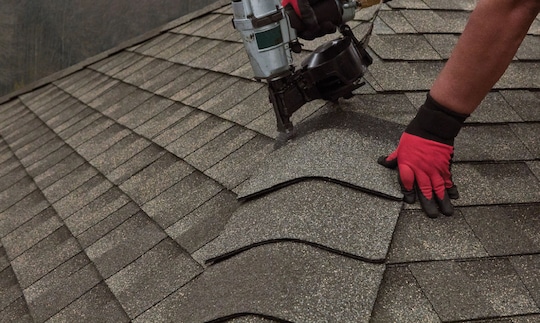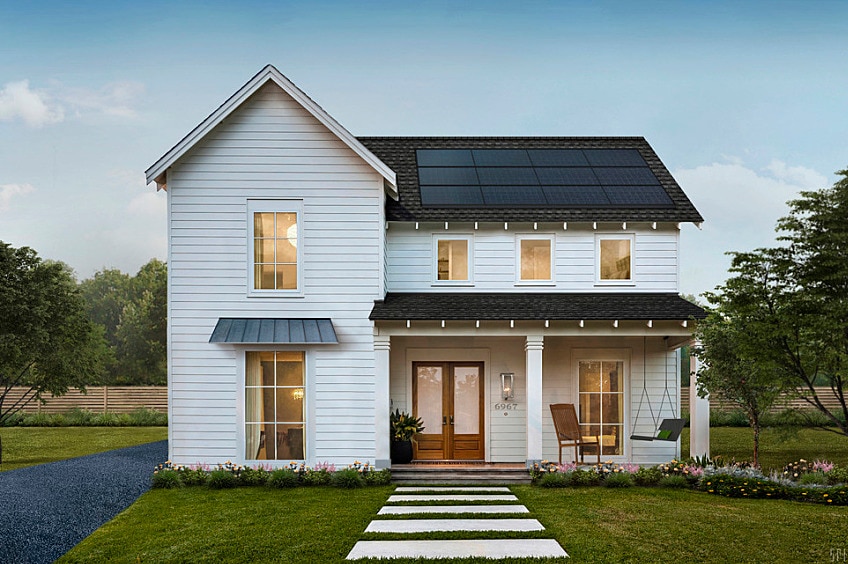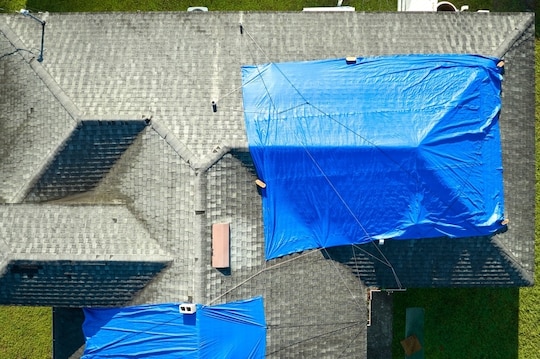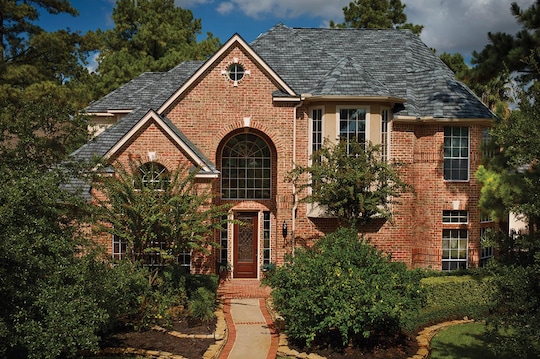
When it's time to replace your roof, the investment you make in your home can help the planet at the same time. Adding a solar system from GAF Energy allows you to reap all the benefits of a solar roof, including the potential for significant savings on electricity costs.
More than two million US homes have gone solar as homeowners switch over to clean renewable energy. Here are some of the advantages of installing an integrated solar roof, according to Keally DeWitt, vice president of marketing and public policy at GAF Energy.
1. It's a Wallet-Friendly Option
One of the main benefits of a solar roof is how it affects your bottom line, says DeWitt. Homeowners continue to want to do the right thing for the sake of their planet and community, but solar roofs have also become an eco-friendly financial asset.
"The great thing about a building-integrated solar energy roof system is that when you need a new roof and add solar into the mix, you may pay a little more money up front, but that initial investment is going to pay you back over time. The additional upfront cost of your solar investment could potentially pay for itself in five to ten years," says DeWitt.
GAF Energy solar roofs produce clean electricity for your home during the day, therefore reducing the amount of energy you purchase from your utility company, ultimately lowering monthly electric bills. If panels produce more power than a home uses, homeowners can also receive a credit for the solar energy sent back to the grid. This is called net metering.
2. It Looks Great
Replacing clunky racks and panels mounted on rooftops, integrated solar roofing systems are sleek, secure, and stylish. Black, low-profile components follow the roof line, boosting your home's curb appeal. The photovoltaic panels in the GAF Energy system are direct-to-deck, meaning they're part of the roofing system and can provide better and more efficient roof protection.
"The solar roof installs like a skylight, and it's flush with the roof. I think it's the best-looking solar on the market," she says.
3. It's Easy to Install
Rather than one crew installing the roof and then another drilling holes to add bolts for the solar panels, the GAF Energy integrated system features a seamless fit between the roof and the panels. This helps to reduce the chance of gaps or leaks that risk damaging your new roof.
"The great thing about the GAF Energy system is it was designed by a roofing company for roofers to install; it often doesn't take much more time than adding a new roof," says DeWitt.
Homeowners may benefit from working with a GAF-certified roofer* to install solar on their home, and the new roof and its integrated solar can be covered under the same industry-leading warranty**.
4. It's Better for the Environment
Even one household can take a pretty large chunk out of their carbon footprint by installing a solar-integrated roof, according to DeWitt.
"One of the reasons I love working in residential solar is the democratization of clean energy that can happen when individual homeowners choose to put solar on the roof to change the energy infrastructure of their home," says DeWitt.
She explains that homeowners who install a solar roof are able to make a difference for the environment and their community without waiting for their utility companies or for the government to enact specific policies and rules that would allow homeowners to switch their power sources.
"Collectively, the growth in residential solar energy is pretty remarkable; it's really making a difference," she says.
5. It Offers Incentives to Homeowners
Depending on where you live, local incentives might be available to expand homeowners' access to clean solar energy, says DeWitt. However, the 26% federal investment tax credit remains the most important government policy that helps drive residential solar adoption in the US***.
"Because you can take that as a credit on your federal income tax, it could further reduce the starting cost of the system, making the financial investment even more attractive," she says.
DeWitt predicts that the rise in popularity of electric vehicles (EVs) could also inspire more homeowners to generate their own clean power affordably. "Having solar panels on your home combined with an EV can be an even more appealing financial option, as well as an environmentally friendly lifestyle choice," she says.
When homeowners choose solar, they're helping to accelerate the momentum of renewable energy use for now and for the future. The GAF Energy system makes it easy to go solar and to contribute to change both globally and locally.
If your roof requires a repair or replacement, visit the GAF Energy website to learn more about solar roofing or get a free estimate.
*Contractors enrolled in GAF certification programs are not employees or agents of GAF, and GAF does not control or otherwise supervise these independent businesses. Contractors may receive benefits, such as loyalty rewards points and discounts on marketing tools from GAF for participating in the program and offering GAF enhanced warranties, which require the use of a minimum amount of GAF products.
**Available for qualifying systems installed by GAF Master Elite® contractors only. See Golden Pledge Limited Warranty and Decotech® Addendum for complete coverage and restrictions. For installations not eligible for the Golden Pledge Limited Warranty and Decotech® Addendum, the Decotech® Limited Warranty applies. Visit gaf.com for copies of these limited warranties.
***Tax credits are available only to the extent of positive income tax liability. Homeowners should consult their own tax advisor to discuss the possibility of a tax credit.



